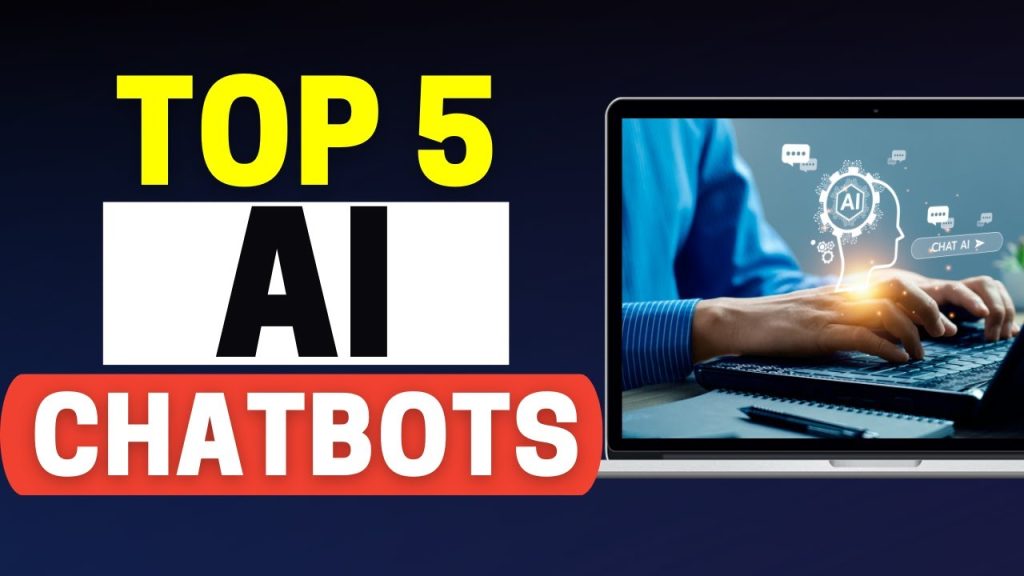The field of conversational AI and chatbots is advancing quickly as 2024 approaches, paving the way for revolutionary advances in a variety of industries. Chatbots are getting more intelligent, more user-friendly, and ingrained in our daily lives. Here, we examine the top five chatbot trends for 2024, emphasizing the ways in which these advancements will influence customer support, corporate operations, and user experiences going forward.

1. Enhanced Natural Language Understanding (NLU)
The ongoing development of Natural Language Understanding (NLU) is one of the most important advancements in chatbot technology. By 2024, chatbots should have advanced to previously unheard-of levels of language comprehension, enabling them to comprehend and analyze human language more contextually and precisely.
Contextual Conversations
With advanced natural language understanding (NLU), chatbots can retain context during a conversation and respond with greater relevance and coherence. Thanks to this advancement, consumers will be able to engage with chatbots in a more smooth and organic way as they can now handle intricate queries and multi-turn interactions.
Emotion Detection
Another fascinating discovery in NLU is emotion detection. Chatbots that possess the ability to identify emotions can evaluate the mood and tone of a user’s communication, enabling them to react sympathetically and modify their strategy according to the user’s emotional condition. This makes the encounter more tailored to the individual and human.
2. Integration with Voice Assistants
In 2024, it’s anticipated that chatbots and voice assistants will be more frequently integrated. With the increasing use of voice-activated devices such as Apple’s Siri, Google Assistant, and Amazon Alexa, chatbots are being developed to integrate easily with these systems.
Multimodal Interactions
Text, audio, and even visual components are all combined in multimodal interactions to give users a more engaging experience. More flexibility and convenience will be provided by chatbots that may transition between text and speech interactions according to the user’s preferences or the context.
Hands-Free Assistance
Voice-activated chatbots help users without requiring their hands, which makes them perfect for situations when typing is not feasible. This trend is especially helpful for sectors where quick and simple access to information and services is essential, such as healthcare, automotive, and smart home devices.
3. AI-Driven Personalization
A key component of chatbot technology is personalization, and artificial intelligence (AI) is enabling more relevant and customized interactions for each user. Anticipate chatbots in 2024 that use AI to provide extremely customized experiences.
User Profiling
Chatbots can collect and examine information about user preferences, actions, and previous exchanges thanks to AI-driven user profiling. Chatbots can anticipate user wants, provide tailored recommendations, and give more pertinent support with the use of this data.
Dynamic Content Delivery
Using real-time interactions and user profiles to tailor services and information to users is known as dynamic content delivery. Chatbots have the ability to adapt their responses in real-time and recommend information based on the user’s current context, hence increasing user satisfaction and engagement.
4. Increased Use of AI in Customer Support
AI-driven chatbots are starting to play a major role in customer service plans, enabling companies to offer effective, round-the-clock support. By 2024, artificial intelligence (AI) will play an even bigger part in customer service, providing even more advanced solutions.
Proactive Support
Chatbots that are trained to anticipate client problems and provide help before the user contacts them are referred to as proactive support. For instance, a chatbot might alert a client to a possible issue with their order and provide fixes, saving them annoyance and improving their overall experience.
Seamless Human-AI Collaboration
Even though AI chatbots can answer a variety of questions, there are still some circumstances that call for human involvement. High standards of service quality are maintained when complicated situations are seamlessly transferred to human agents thanks to the trend toward seamless human-AI collaboration.
5. Industry-Specific Chatbots
There’s a rising tendency for industry-specific solutions as chatbot technology advances. By offering specialized features and knowledge, these chatbots are made to specifically handle the demands and difficulties of specific sectors.
Healthcare
Chatbots are being utilized in the healthcare industry to schedule appointments, remind patients to take their medications, and provide health information. To provide precise and dependable assistance, these chatbots are trained on medical data and laws.
E-Commerce
Chatbots for e-commerce help with order monitoring, customer service, post-purchase assistance, and product recommendations. These chatbots improve the consumer experience and increase revenue by being aware of the subtleties of online purchasing.
Financial Services
Chatbots for financial services can answer questions about balances, transaction information, fraud warnings, and financial guidance. Strict security protocols are followed by these chatbots, which give users rapid and safe access to their financial data.
Conclusion
With developments in NLU, voice integration, AI-driven personalization, customer support, and industry-specific applications setting the pace, 2024 looks to be a game-changing year for chatbot technology. Chatbots will become more and more important in improving user experiences and optimizing business processes as they grow in intelligence and capability. Businesses hoping to take full use of chatbot technology and provide outstanding customer service will need to keep ahead of these trends.
